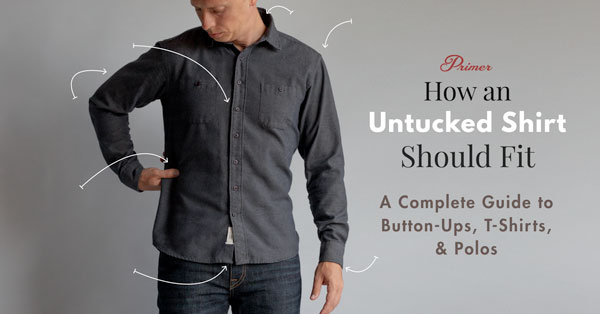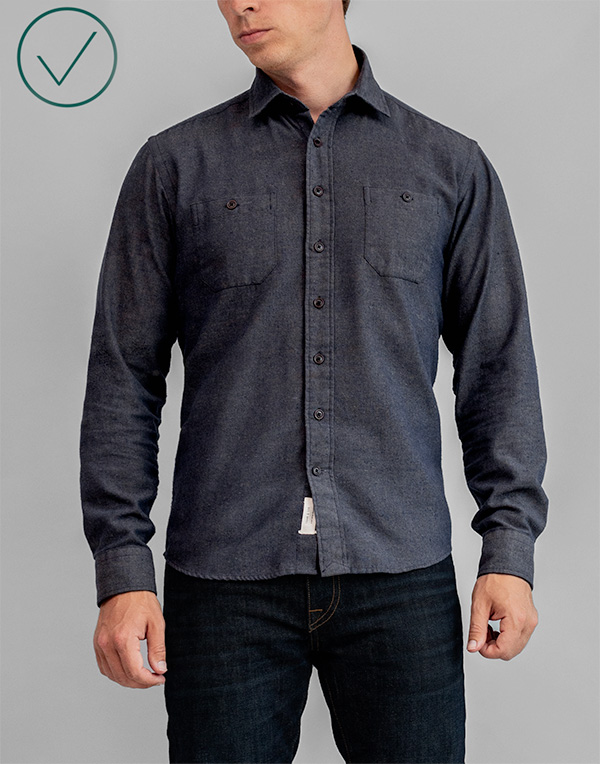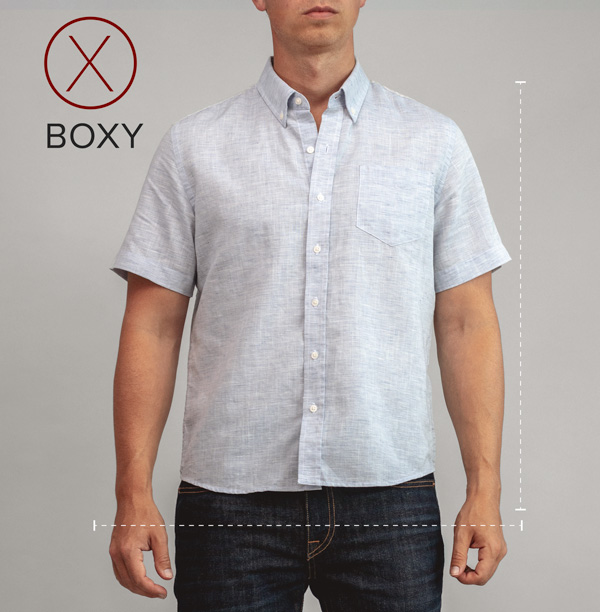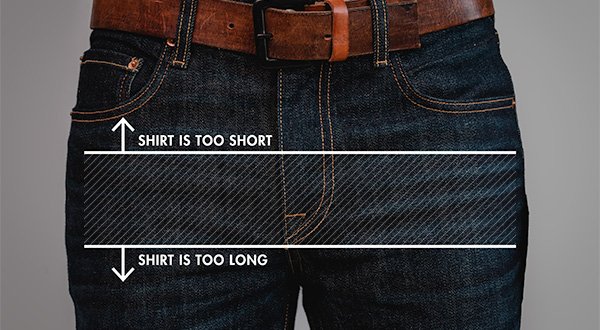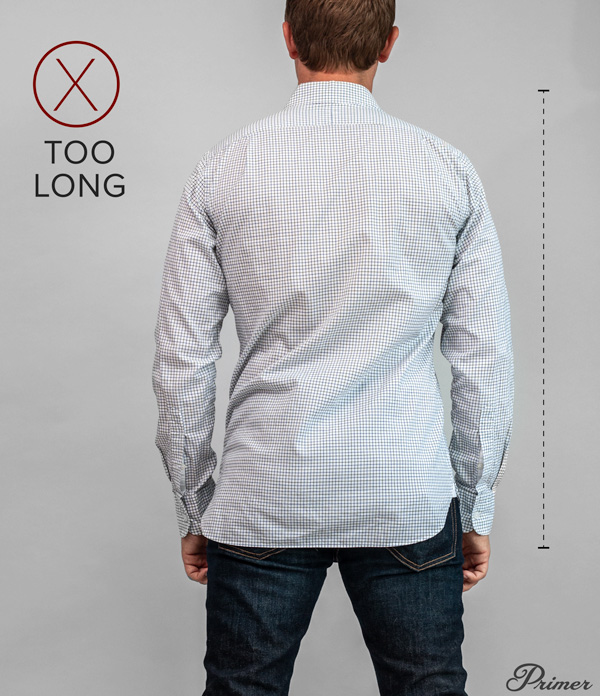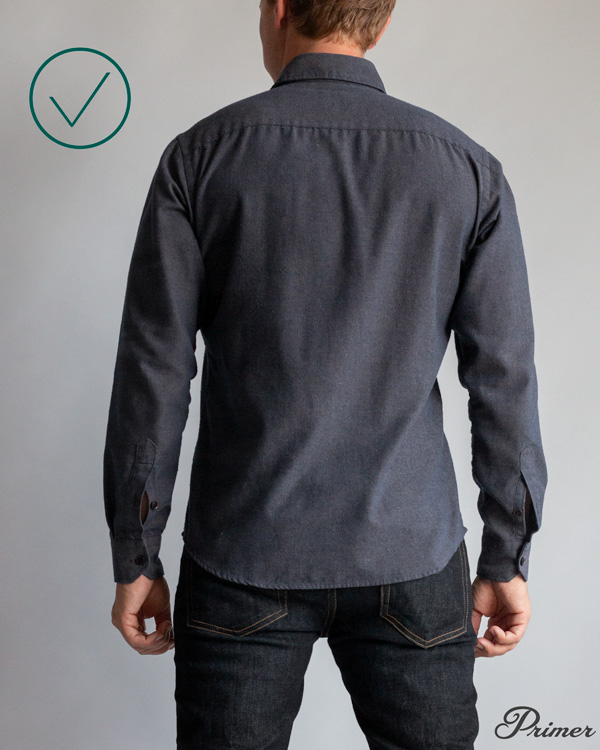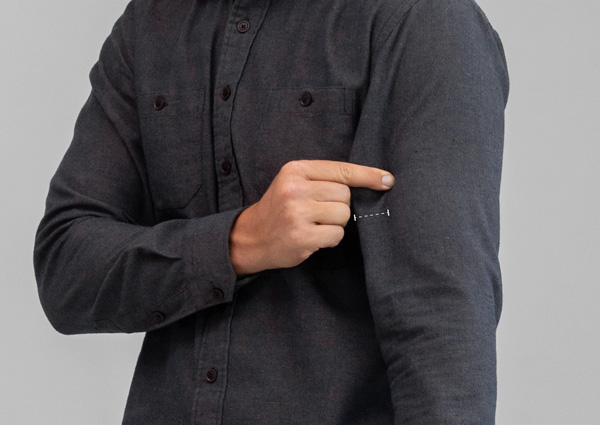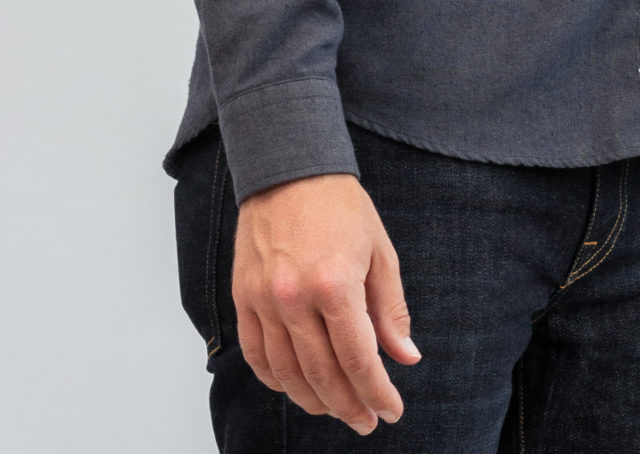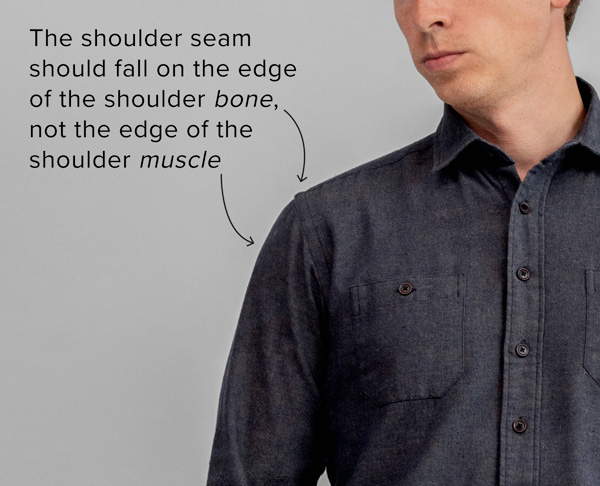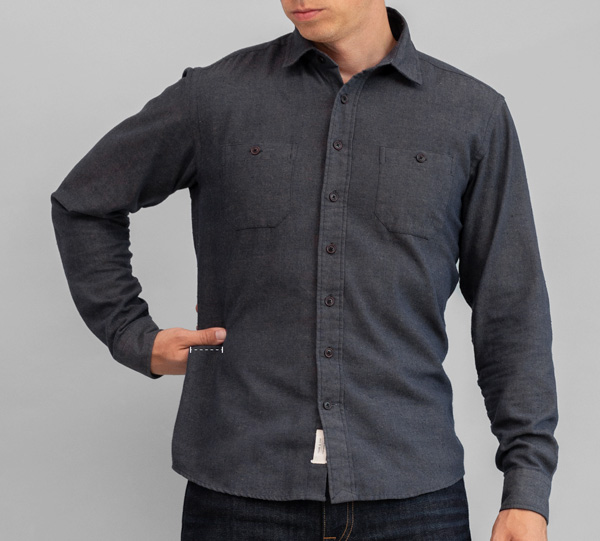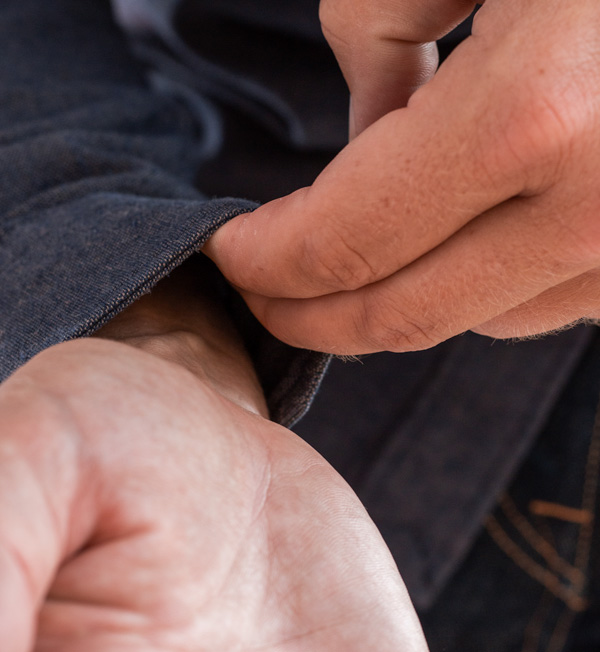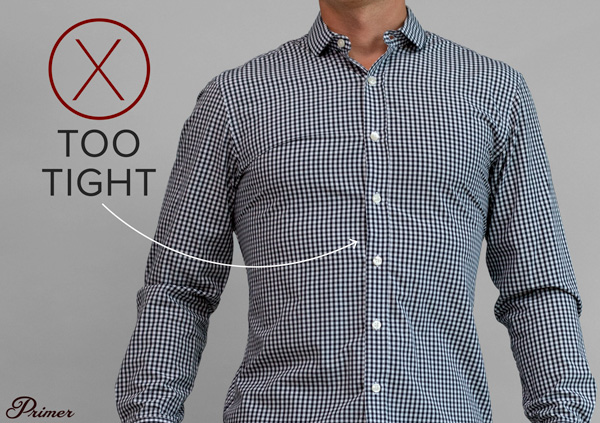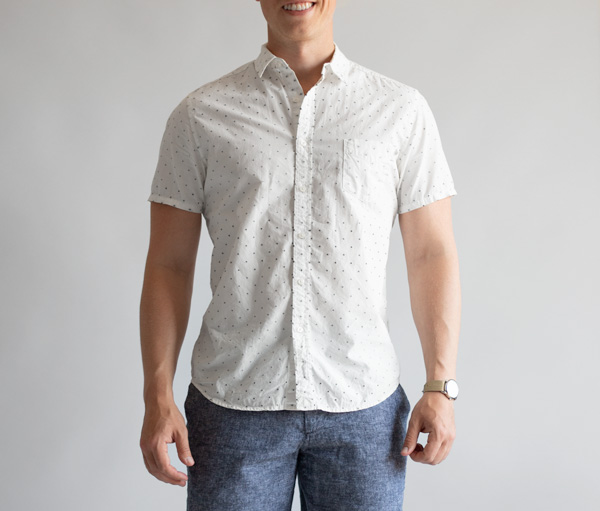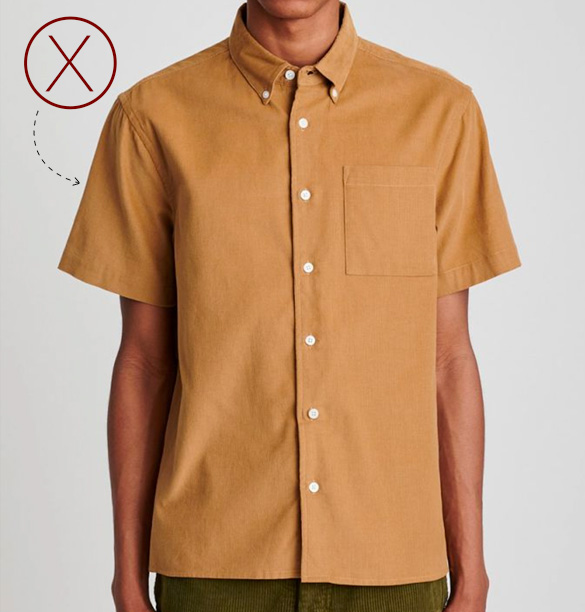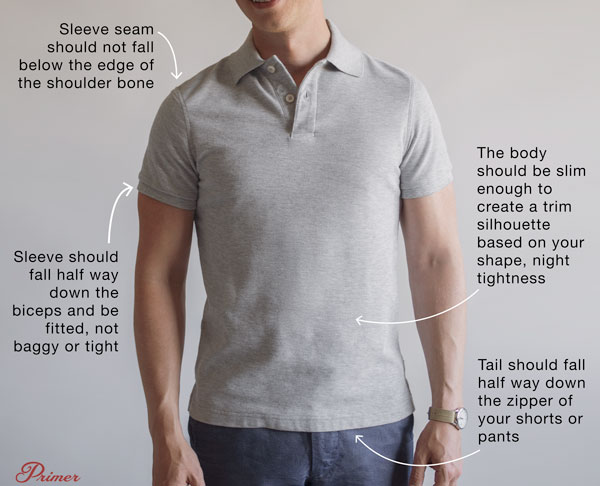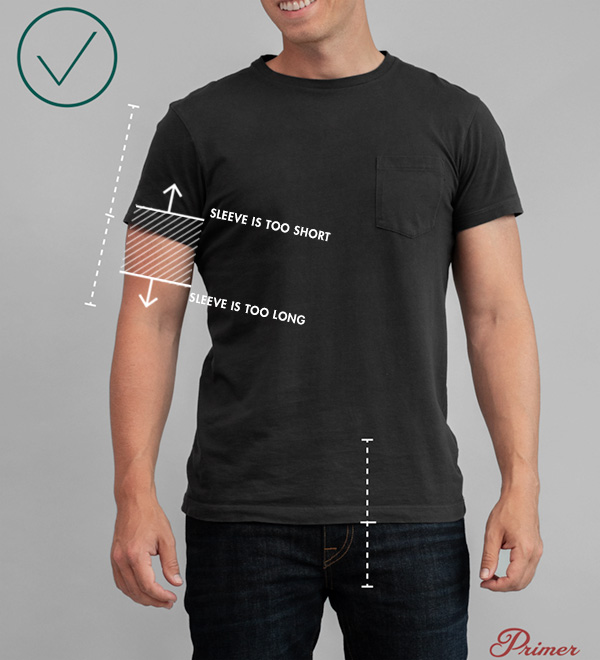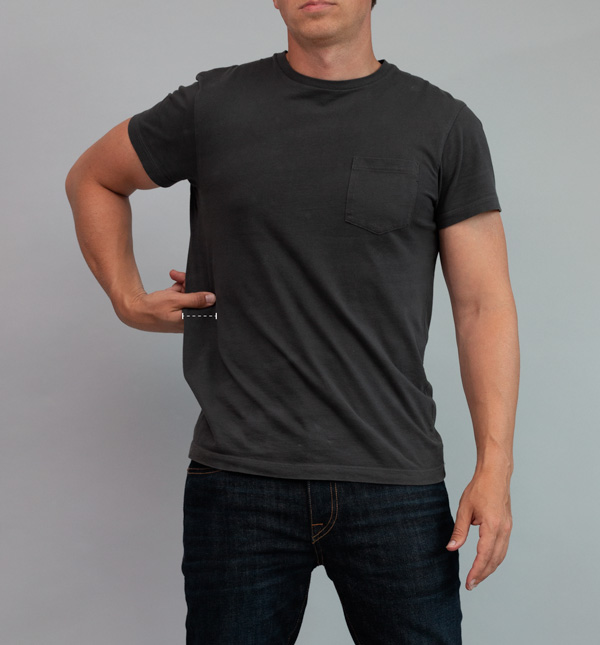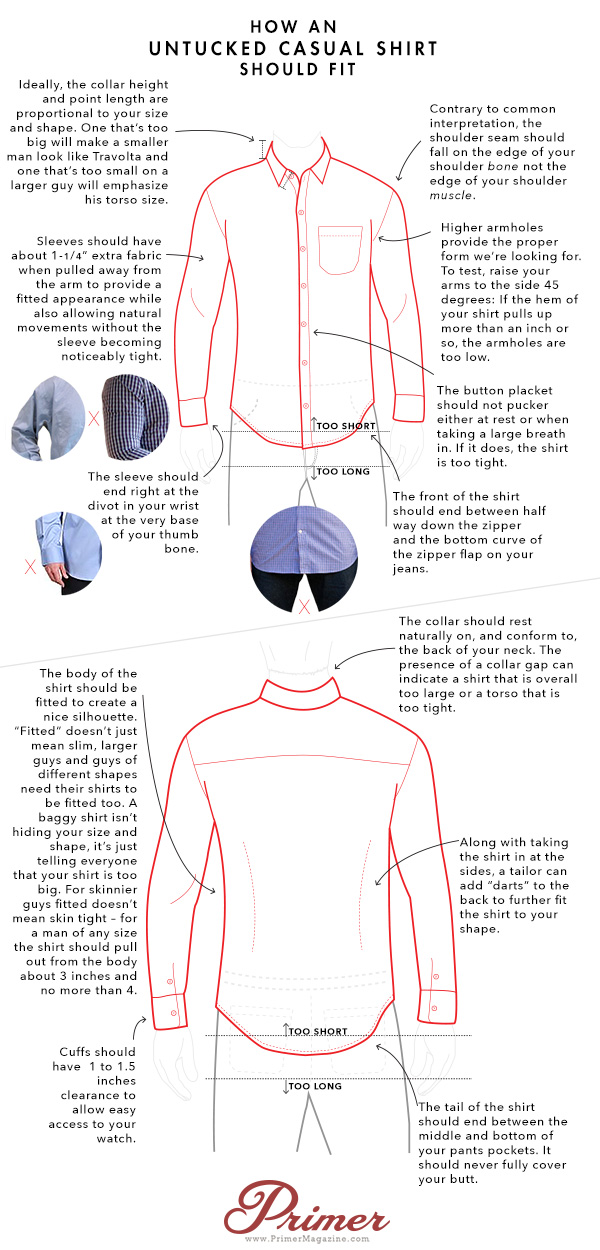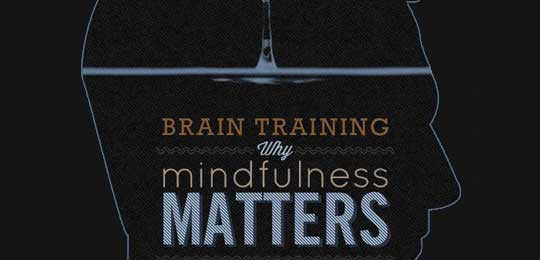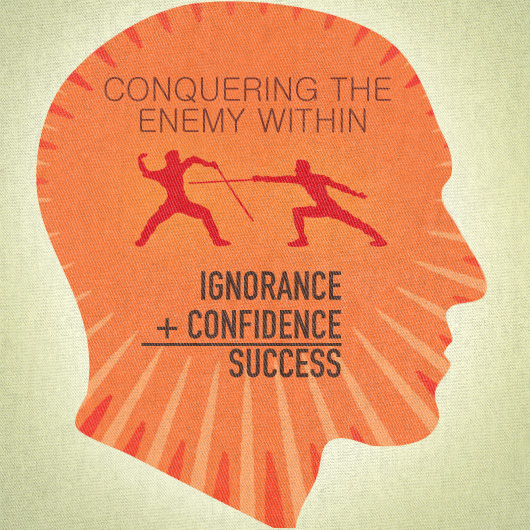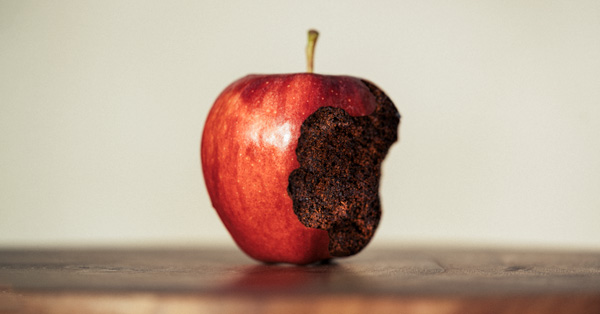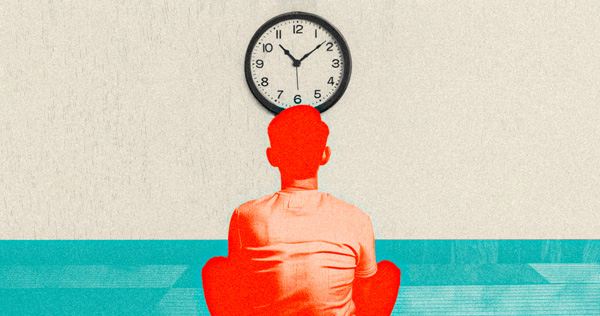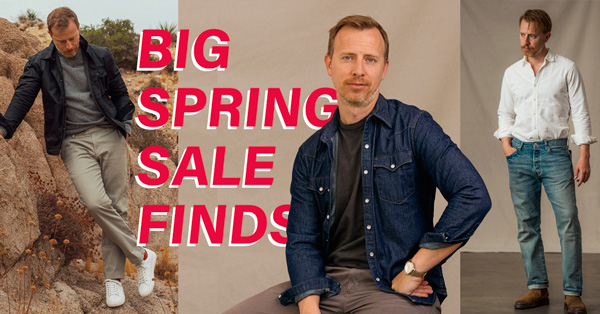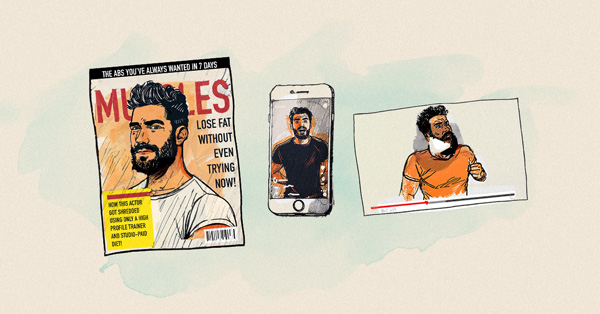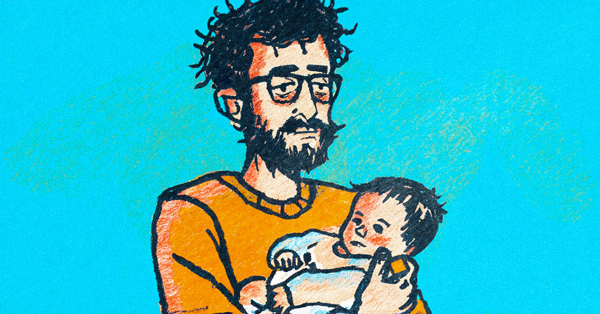For many, the principles of how a tucked-in dress shirt should fit are familiar, if not routine. If these rules haven’t already been drilled into you, here’s our guide.
It’s becoming more common, even expected, to see untucked shirts in casual and smart casual workplaces. Even as untucked shirts become more common the rules on how to wear them are less clear than for tucked shirts.
In fact, we’re willing to bet at least 60% of men that read this will be wearing shirts that are too large to be worn untucked.
When looking for a good candidate for wearing a shirt untucked you need to take into account many of the same details that you would for a tucked shirt, but there are a few important differences to consider.
In this guide, we'll cover long sleeve button-up shirts, short sleeve button up shirts, polos, and t-shirts. First up:
How An Untucked Button-Up Shirt Should Fit
The questions we most often get are along these lines: Can any button-up be worn untucked? Do you need a special shirt that’s designed to be untucked?
The answer is “No … probably.” Most dress shirts are designed to be tucked, but these days many brands have casual styles that are shaped to go either way. If you find yourself not wearing shirts tucked in very often or splitting your time 50-50, we recommend a preference toward buying shirts that can be worn both tucked and untucked. If you choose to go that route, you may want to find shirts that fit on the longer end of our recommendations so that they stay tucked in better, but don't look too long when they're not.
First and foremost, focus on getting a good fit. Here’s how.
Do the fit rules change for larger men?
Fit guidelines apply regardless of size or shape since they're relative to the body. Larger men may need to tailor larger shirts in greater ways to fit their shape properly, or they may feel more confident in baggier shirts. Ultimately, if you're self-conscious about the clothing you're wearing, they're having the opposite effect than they should. So choose fits that you feel your best in, internet guides be damned.
Avoid The Boxy Look
Before we lay out the “dos” of untucked shirt fit, there’s a big “don’t.” Unless you’re a Minecraft character you already know that a boxy fit is bad … but what does “boxy” actually mean?
Boxy means excess fabric on the sides of the body fall straight down, creating a square silhouette. The most common culprit is simply wearing a shirt that’s too large, but the cause of a boxy fit can be more subtle and based on your body type or cut of the shirt, too.
For modestly proportioned guys it’s easy to nail a shirt’s length but have too much fabric in the shoulders and trunk. Result: a boxy fit. Conversely, it's possible for a shirt to be the proper length but if it's also very fitted, the shirt can look off because it will appear too narrow and long.
The takeaway: when thinking about these fit guidelines, take your body type into account and adjust as needed. Slim fit shirts can prevent boxiness and regular fit shirts will allow more room in the body when necessary.
One thing to note: the rules that follow (as with all style guidelines) are based on a standing posture with arms at your sides.
⤷ Read: Button Up Vs Button Down Shirt – What’s the Difference?
Length
This is the most important difference between tucked and untucked in a button-up shirt. Too short looks cropped, and too long looks like you’re a kid wearing Dad’s shirt.
The zipper on your pants provides an easy-to-remember rule: The front of the shirt should end somewhere between the midpoint and lower end of your zipper.
The tail of the shirt should end between the middle and bottom of your pants pockets. It should never under any circumstances fully cover your butt. If it does, it either indicates that the shirt is too large or that it’s likely a dress shirt designed to be tucked in.
Collar Height
Ideally, the collar height and point length are proportional to your size and shape. A collar that's too big will make you look like Travolta and one that's too small will make you look like Farley (RIP).
The back of your collar should rest naturally on the back of your neck. A gap between your collar and neck can indicate a shirt that is overall too large or a shirt body that’s too tight (and, again, make you look like a kid).
Read next: Shirt Collar Types: Primer’s Complete Visual Guide
Sleeves
For a shirt to look fitted while also allowing natural movements, sleeves should have about 1″ to 1.5” extra fabric when pinched at the bicep.
The sleeve should end at the very base of your thumb bone, where – if you flex your thumb – you’ll find a little divot.
Random fact: in medicine, that divot is called the anatomical snuffbox because it provided a convenient bowl for gentleman to sprinkle snuff – finely ground tobacco – before they snorted it.
Shoulders
The shoulder seam should fall on the edge of your shoulder bone, rather than the edge of your shoulder muscle (aka deltoid). This detail can be the difference between a tailored appearance and a boxy silhouette, and one many men get incorrect.
If the shoulder seam is riding up toward your neck, you probably have an issue with armholes…
Armholes
Armholes are another detail that make a surprisingly big difference. In the past, most brands tended toward making the armholes too low in order to fit the most people. Now, in the age of the online bespoke atelier (and Amazon), you stand a better chance of finding the right size for your body.
To check armhole fit, raise your arms to the side 45 degrees: if the hem of your shirt pulls up more than an inch or so, the armholes are too low.
Fun fact: The lower side of the armhole on a suit jacket is known as the armscye, or literally, the arm's eye.
Shirt Body and Cuffs
The body of your shirt should fit you. “Fitted” doesn't mean tight; “fitted” means fitted. A skin-tight shirt will constrain your movements and make you look uncomfortable. Likewise, a baggy shirt will not hide your size or shape, it will just convey that your shirt is too big. For men of any size, there should be about 1.5″ at its loosest point”, but no more than 3” when pinching the extra fabric on the side. Note: Don't pull the fabric out to the side, simply clamp down on it with your thumb and finger.
Cuffs should have 1-1 ½” clearance when you hook a finger in at the wrist to allow easy access to your watch.
Buttons
On a properly fitting shirt, buttons are always going to pull when you engage in movement. Remember that these fit rules are based on standing up straight with your arms at your sides.
However.
If you have puckering going on at the buttons when you’re just standing, you need a bigger shirt. Period.
How An Untucked Short Sleeve Button-Up Should Fit
The rules for short sleeve button-ups are identical to their long sleeve cousins, with an important addition: you want to make sure the short sleeves don’t jet off at an angle, and instead remain relatively close to the silhouette of your arm.
With short sleeve shirts in general it’s doubly important to avoid a fit that’s too tight, creating a now-dated, Jersey Shore cast member look.
Tailor Your Casual Shirts
If you have trouble finding well-proportioned, properly fitting button-ups off the rack tailoring may solve your issue. While most people reserve tailoring just for dress shirts, it doesn’t have to be! Slimming the torso or adding darts are common casual shirt alterations for us here at Primer.
One word of caution: We’ve experimented with having shirts shortened (the equivalent of hemming your pants), but it doesn’t generally work as desired – the shirt’s proportions get messed up and it ends up looking cropped.
How An Untucked Polo Should Fit
Most of the above principles apply to polos, including length.
A tapered body fit is even more essential with polos. Why? The principle drawback with polos, especially more affordable ones, is that they look boxy or drapey.
As for sleeves, they should fall halfway down your bicep and be fitted (not too tight, not too loose).
For more on everything from polo fit to linen shirt styles, check out our post on 15 Men’s Summer Style Essentials!
How A T-Shirt Should Fit
T-shirts are most often worn untucked, so we’re including them in this guide. These t-shirt tips aren’t exhaustive – but they are the most common mistakes we see in our readers and men at large.
As with the other types of short sleeve shirts, t-shirt sleeves should fall between the middle and three-fourths of the way down the bicep, with a preference toward the higher end of that range. The sleeve seam should again fall on the edge of the bone and not the muscle (or below), a very common sign someone is wearing a t-shirt that is too large. Contrary to a lot of entry-level style advice out there, Primer isn't anti t-shirt: We're pro t-shirts that fit properly. The difference creates a casual look that is intentional and rakish, not lazy and teenager-ish.
I hope it’s clear by now we’re not advocating for a fit that’s so tight you can’t fit a sheet of paper between your sleeve and your bicep, but the reality is most guys wear their t-shirts too large.
The easiest ways to fix t-shirt fit? Look for slim fit styles and try to find sleeves that are more tapered than you’re used to wearing.



